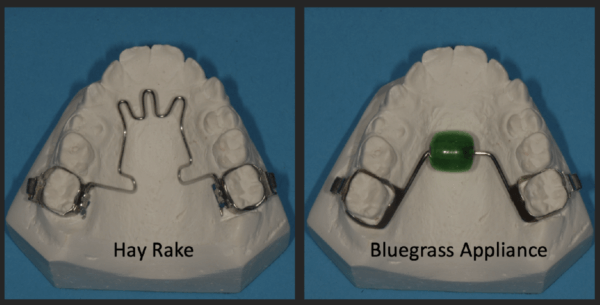“They only suck their thumb when they are very tired, it’s not a real problem” says Mum. The reality is, any force on the teeth for greater than 6 hours per day will move the teeth. If it’s a force from braces, teeth will move favourably; if it’s from a thumb, they will move unfavourably; and if both are present the teeth will likely stay as they are.
80% of children in the western world, during their early years, suck their thumb or a dummy.
Interestingly, the prevalence in Eskimos is 0%. The habit usually develops within the first 3 months of life. Unlike dummy sucking, which declines rapidly after this and is almost non-existent after 7 years of age, thumb habits decline at a slow rate and often persist into the permanent dentition.

Some believe that the habit is a reflex, making them feel secure and safe. Others believe that it is a learned behaviour, with an infant’s sucking urge persisting after eating and the dummy or digit sucking satisfying any surplus urge.
Potential problems from a persistent habit range from chapped skin, calluses, nail infection and speech problems to more serious issues including altered growth and development of the dental-facial structures. A typical resultant malocclusion includes an open bite, protruding upper incisors and a narrowed upper dental arch.

Before we look at ways to break the habit, it is worth highlighting the role of dummies in preventing a thumb sucking habit. Research suggests that providing a dummy will reduce the likelihood of a child developing a thumb sucking habit. This is favourable, as dummy sucking has fewer problems in the long term, is usually self-limiting and the habit can be broken by removing the dummy. If a dummy is to be used, it should not be sweetened, it should be used as little as possible during the day from 2 years of age and an orthodontic dummy, which collapses in the mouth, should be used.
An ideal time to stop a thumb sucking habit is before the eruption of the permanent incisors, therefore preventing unwanted effects on the permanent dentition. The child must want to stop, otherwise, they are unlikely to respond to the following techniques.
We always start with non-physical methods:
If the above proves unsuccessful, then it is time to consider physical methods:

So whilst the thumb-sucking habit is indeed the orthodontist’s nemesis, there is good reason to stop the habit and tried and tested methods to achieve this. Once the habit is stopped, the teeth may drift back to favourable positions and if not, orthodontics can be pursued to deliver that perfect smile.